76 years of Nakba: Revisiting the catastrophe of dispossession and occupation
By Humaira Ahad
Clad in traditional attire, a distraught Palestinian mother is carrying her infant child and crying inconsolably while leaving the Al Zaytoun neighborhood in Gaza’s Old City.
She is carrying nothing else and knows that perhaps she might never return home as the Israeli occupation forces continue to bombard every inch of the besieged Palestinian territory.
She is not alone though. Tens of thousands of mothers across the Gaza Strip have been forced to abandon their homes and belongings for a future that is ominously uncertain and bleak.
Nearly 2 million Palestinians have been displaced and more than 35000 killed since the Israeli regime launched its indiscriminate aggression on the coastal Palestinian territory on October 7, 2023.
This isn’t anything new for Palestinians though. Massacres and mass displacements have been their fate for the past 76 years. They have not seen or experienced a stable and peaceful life.
Their history is the history of occupation, usurpation, destruction, and ethnic cleansing.
May 15 is marked around the world as the day of “Nakba”, or “catastrophe”. The day refers to the large-scale ethnic cleansing of Palestinians and their mass exodus, courtesy of the apartheid Israeli regime and its Western backers.
Between 1947 and 1949, more than 500 Palestinian villages and towns were destroyed and tens of thousands of local inhabitants were massacred. From a population of 1.9 million Palestinians, at least 750,000 became refugees and were forced out of Palestine.
Almost 78 percent of the Palestinian land was illegally confiscated by the Zionist regime and eventually on May 15, 1948, the apartheid entity formally came into existence.
Precursor to Nakba
Nakba was the result of the emergence of the Zionist ideology. Zionism, which started in the latter part of the 19th century in Eastern Europe, believes that “Jews constitute a nation whose survival, both physical and cultural, requires its return to the Jews’ ancestral home in the Land of Israel.”
And, Palestine is, much to the chagrin of historians, claimed to be this ancestral home.
Though some of the movement’s pioneers initially supported the so-called “Jewish state” in places such as Uganda and Argentina, they eventually called for occupying Palestine, falsely amplifying the claim that the Holy Land was promised to the Jews.
Astro-Hungarian journalist Theodor Herzl, also known as the father of modern political Zionism, published a pamphlet in 1896 called “The Jewish State”.
He argued that the establishment of a modern, European homeland for Jews would provide a refuge for a “persecuted people” and prevent competition with non-Jews.
In his pamphlet that later became the basis of the illegitimate regime, he envisioned the Jewish homeland as “a rampart of Europe against Asia, an outpost of civilization as opposed to barbarism.”
Promoting the ideology rooted in hate and fascism, the Zionist movement acquired a settler-colonial dimension, bearing a stark resemblance to the present societies in the United States or Australia that exterminated the indigenous population of the land.
The Zionist leaders spoke about the ‘transfer’ of Palestinians, the term used as a euphemism for the ethnic cleansing of the original inhabitants. This was deemed a prerequisite for building a Zionist entity.
The Zionist leader Leo Motzkin said: “Our thought is that the colonization of Palestine has to go in two directions: Jewish settlement in Eretz Israel and the resettlement of the Arabs of Eretz Israel in areas outside the country.”
Zionist control of Palestine
From 1882 onwards, thousands of Eastern European and Russian Jews began migrating to Palestine.
The First World War marked a key turning point in the Zionist quest for a “Jewish state.” After the dissolution of the Ottoman Empire (1517-1914), the British occupied Palestine as part of the infamous Sykes-Picot treaty (1916) that was signed between the UK and France to share the West Asian countries for personal interests.
In November 1917, British foreign secretary Arthur Balfour addressed a letter to Lionel Walter Rothschild, figurehead of the British Zionist community, on “the establishment in Palestine of a national home for the Jewish people.”
The letter opened a new dark chapter for Palestinians marked by occupation and apartheid.
The British Empire bolstered the ideology of Zionism hoping to win support among the significant Jewish populations in the US and Russia for the allied effort during WWI.
By 1920, the population of Palestine was 650,000, with Muslim and Christian Arabs constituting over 90 percent of the population and the Jewish community (Yishuv) the remaining 10 percent.
The original Yishuv lived harmoniously with fellow Muslims and Christians and did not aspire to build any so-called “Jewish state” in Palestine. However, all that changed following World War I.
An editorial in the newspaper Filastin put it: “Ten years ago, the Jews were living as Ottoman brothers … The Zionists put an end to all that and prevented any intermingling with the indigenous population.”
After World War I, Zionist immigration to Palestine, facilitated by the British, increased dramatically.
Under the auspices of the British authorities, a governing body (Jewish Agency) led by the Labour Zionists, a trade union organization (Histadrut), and a military force (Haganah) came into being.
Arabs began to be expelled from their farmlands, from their homes. The ethnic cleansing started.
In 1936, the Arab Revolt was launched by Palestinians against the British and their support for Zionist settler-colonialism. The uprising that lasted till 1939 was violently crushed by the British authorities.
At least 2,000 Palestinian homes were destroyed, approximately 10,000 Palestinians were put in concentration camps and 200 Palestinian nationalist leaders were deported.
As per conservative estimates, 10 percent of the Palestinian male population was killed, injured, exiled, or put in jails by the end of the Arab uprising.
On May 14, 1948, David Ben-Gurion, the then-head of the Jewish Agency, declared the establishment of Israel
— Press TV 🔻 (@PressTV) May 15, 2024
The day is the starting point for decades of suffering for Palestinians under the Israeli occupation of their lands; that is why Palestinians refer to May 15th as Nakba Day pic.twitter.com/9U68aGQk90
British withdrawal and Nakba
In early 1947, the British government ended its colonial project and handed over the mess that it had created in Palestine to the United Nations. On November 29, 1947, the UN adopted Resolution 181, recommending the partition of Palestine into so-called Jewish and Arab states.
At the time, the Jews in Palestine constituted one-third of the population and owned less than six percent of the total land area.
Under the UN partition plan, they were allocated 52 percent of the land. According to the plan, the native Arabs were deprived of fertile agricultural lands and prime seaports. No surprise, Palestinians rejected the proposal as unfair and unjust.
This was followed by Zionist terrorist groups such as Haganah, Lehi and Irgun launching a violent expedition to expand the occupying, illegitimate entity. Large-scale attacks were organized for the mass expulsion of Palestinians from their homeland that culminated in the Nakba.
The British occupation authorities had announced that they would be ending their mandate in Palestine on the eve of May 15, 1948. Eight hours earlier, David Ben-Gurion, the chairman of the Jewish Agency and also the policy director of Haganah, who later became Israel’s first prime minister, announced what the Zionists called a “declaration of independence” in Tel Aviv.
The British Mandate ended at midnight, and on May 15, and the Israeli regime came into being, in an illegitimate way. In less than six months, from December 1947 to mid-May 1948, Zionist armed groups expelled about 440,000 Palestinians from 220 villages.
Massacres that unfolded with Nakba
Many brutal massacres were committed by the regime from December 1947 to mid-May 1948.
On April 9, 1948, more than 110 Palestinian residents of the Jerusalem village of Deir Yassin were killed by members of the Zionist terrorist groups of Irgun and Stern Gang. The massacre was led by Menachem Begin and Yitzhak Shamir, who would both become prime minister of Israel later.
The massacre proved to be a pivotal moment in Palestinian history and came a few weeks before the declaration of the establishment of Israel.
Some of the female victims were raped before being murdered. Entire families were killed. Dozens of men were paraded on trucks before being taken in a nearby quarry to be killed.
The Haganah militia, the group that later formed the basis of the Israeli army provided support to the attack on Deir Yassin with mortar fire and by disposing of the bodies.
The Haganah was under the control of David Ben-Gurion, who became the regime’s first prime minister just over a month after the massacre.
This tragic event instilled fear in the endemic population and triggered a mass exodus of Palestinians from their homeland.
Abu Shusha Massacre in May 1948 took place in the village of Abu Shusha, starting with a string of armed attacks and culminating in the mass slaughter on May 13. The remaining inhabitants were forcibly displaced. And the village was occupied by the Zionist forces on May 14.
The initial assault was orchestrated by the Givati Brigade, approximately 60 residents were executed. In 1995, a mass grave containing 52 skeletons was discovered at Abu Shusha. Cases of sexual assault by the Haganah terrorist group were also reported.
Two other massacres were committed at Sa'sa' by Haganah forces in 1948 - one in February and the other in October. On 15 February, a Palmach force from the third Battalion of the terrorist group raided the village during the night; explosives were placed around a number of houses.
This resulted in the destruction of houses. The commander of the operation summarized the attack by saying that “it planted a great fear in the hearts of the population of the villages.”
The History of the Haganah refers to the massacre as “one of the most daring raids in the depth of enemy territory.”
Baldat al-Sheikh massacre was committed in Balad al-Shaykh by the Haganah on 31 December 1947.
The personnel from the First Battalion of Palmakh and the Carmelite brigade launched an attack on the Palestinian village. Taking the inhabitants by surprise as they were sleeping, the Zionist terrorists pelted them with hand grenades, then went inside, firing with machine guns.
The terrorist attack led to the deaths of approximately sixty citizens inside their homes, most of them women, elderly and children.
After the massacre, the village was partially evacuated on 7 January 1948. On 24 April, Haganah units attacked again occupying the village completely forcing the Arabs to flee.
Is Nakba over?
Nakba was followed by Naksa, meaning “setback”. During the Arab-Israel 1967 war, the Zionist entity occupied the remaining Palestinian territories of East Jerusalem, the West Bank, and the Gaza Strip.
It took control of the final 22 percent of historic Palestine that it wasn't able to occupy in 1948. Presently the regime controls more than 85 percent of the total land. The Naksa led to the displacement of some 430,000 Palestinians.
The process of ethnic cleansing of Palestinians and illegal confiscation of their land did not end with Nakba but continues even today in various forms and manifestations.
Since October 7, a new Nakba has been unfolding in the form of Israel’s genocidal war on Gaza. The death toll from the Israeli bombardments has reached nearly 35,200 with more than 79, 000 injured.
Every day, 37 children are orphaned. Millions of people are displaced. Presently a humanitarian disaster is unfolding in the southern city of Rafah where millions of Palestinians had sought last refuge following the regime’s air and ground strikes on the besieged strip.
“Stranded, their homes demolished, loved ones killed and repeatedly displaced on their land, they had sought refuge in Rafah in the far southern reaches of the strip to escape death and destruction and to find a safe place that does not exist,” the UN said about the plight of Palestinians.
“They are now heading along the coastal road again to an unknown fate with the start of military operations in the eastern areas of Rafah.”
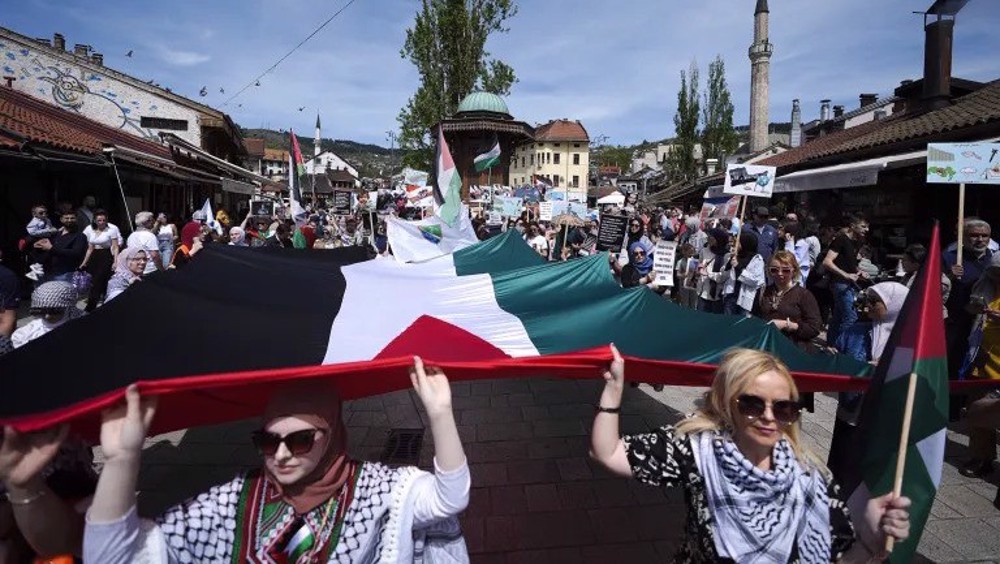
Hamas urges global strikes, sit-ins to end Israel’s genocide in Gaza

UNRWA: Gaza ‘land of desperation’ after 50 days of total Israeli siege
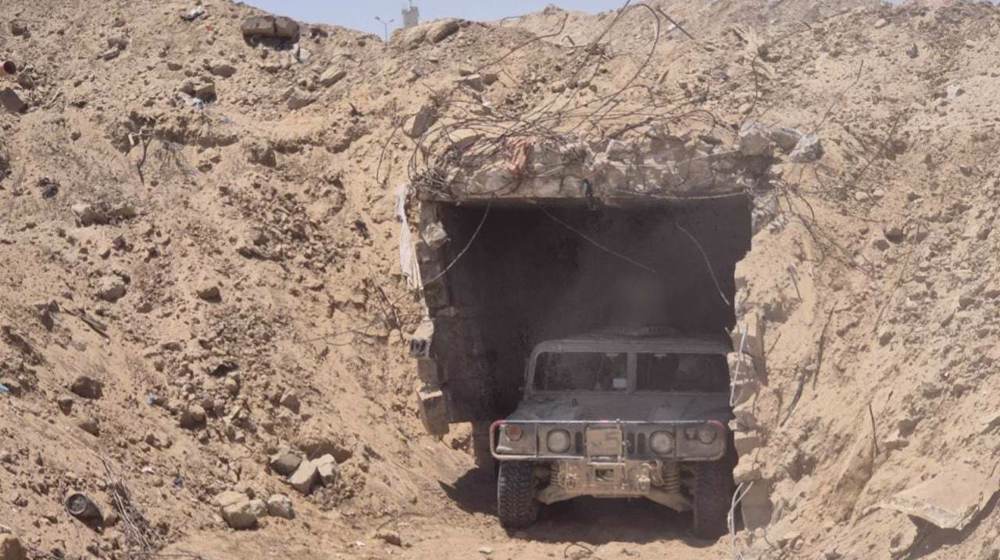
Lies unraveled: Ex‑minister says Israel faked Gaza tunnel image to stall truce deal
Iran, China working resolutely to safeguard mutual interests: Tehran says as FM departs for Beijing
Yemen asserts enhanced military readiness; takes US aircraft carriers under firepower
VIDEO | Iran seeks foreign investment to boost oil, gas sectors
Iran condemns terror attack in India's Kashmir region
After second Signalgate scandal, Democrats call for Hegseth’s resignation
Mahmoud Khalil missed son's birth after US officials denied temporary release
Iran’s annual inflation up 0.7% to 33.2% in April: SCI
Ayatollah Sistani offers condolences on passing of Pope, hails his role in promoting peace


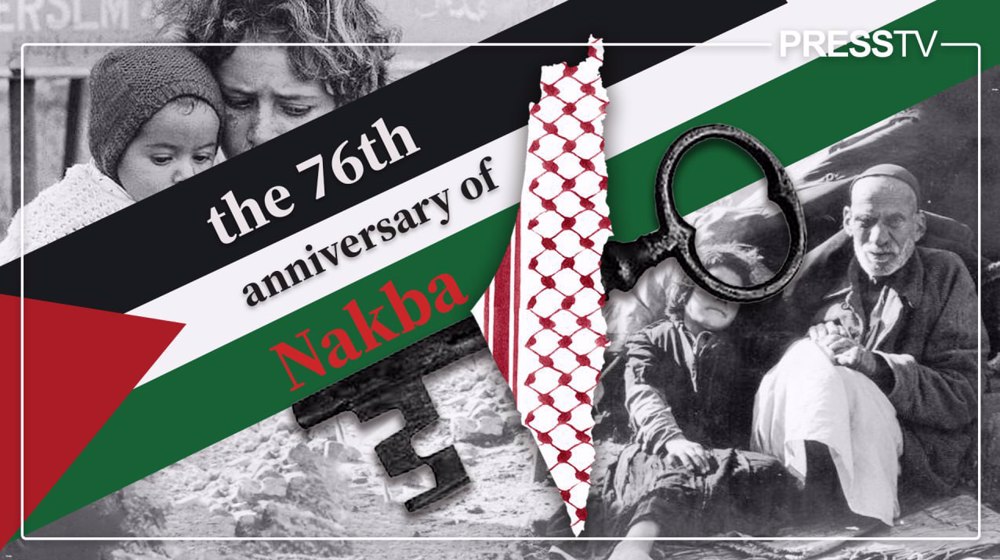
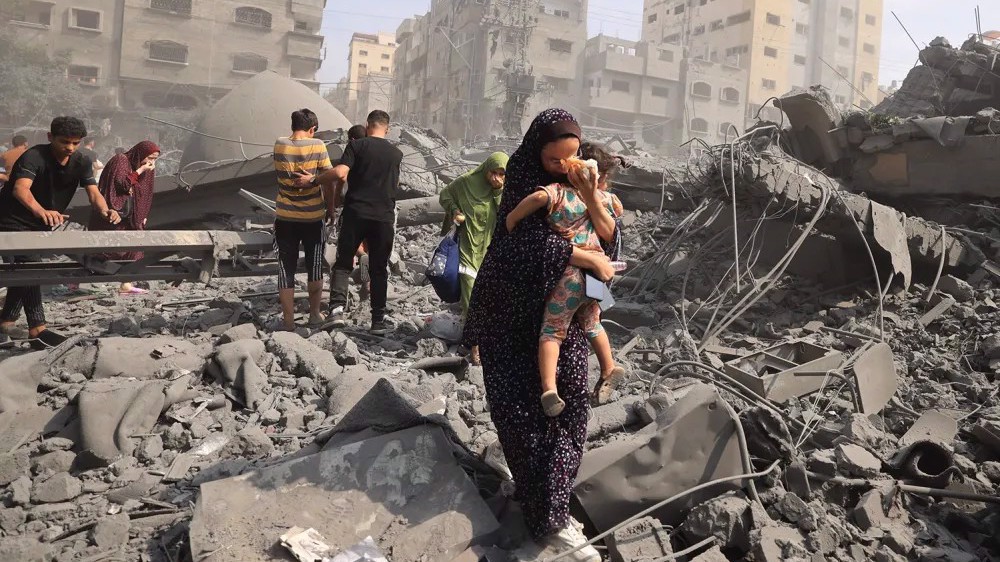
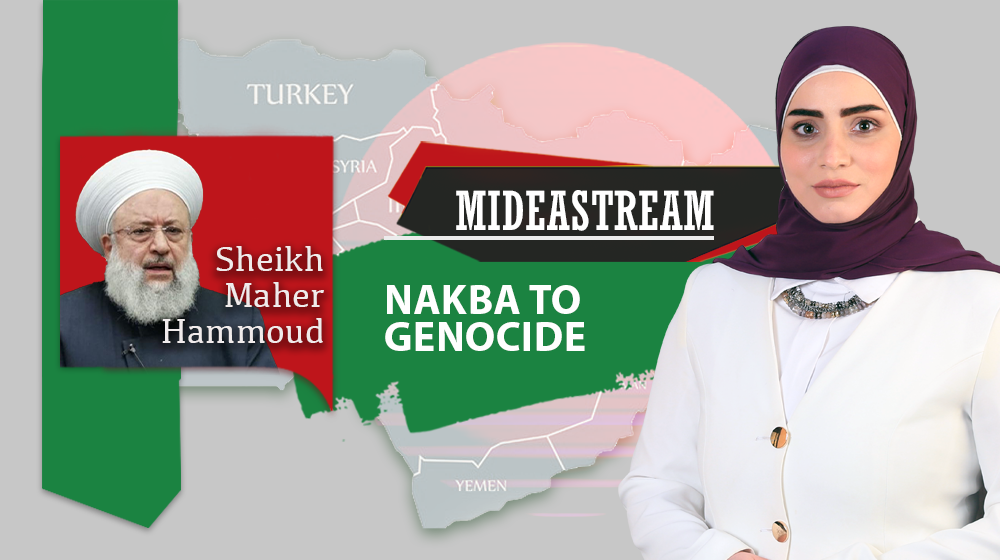
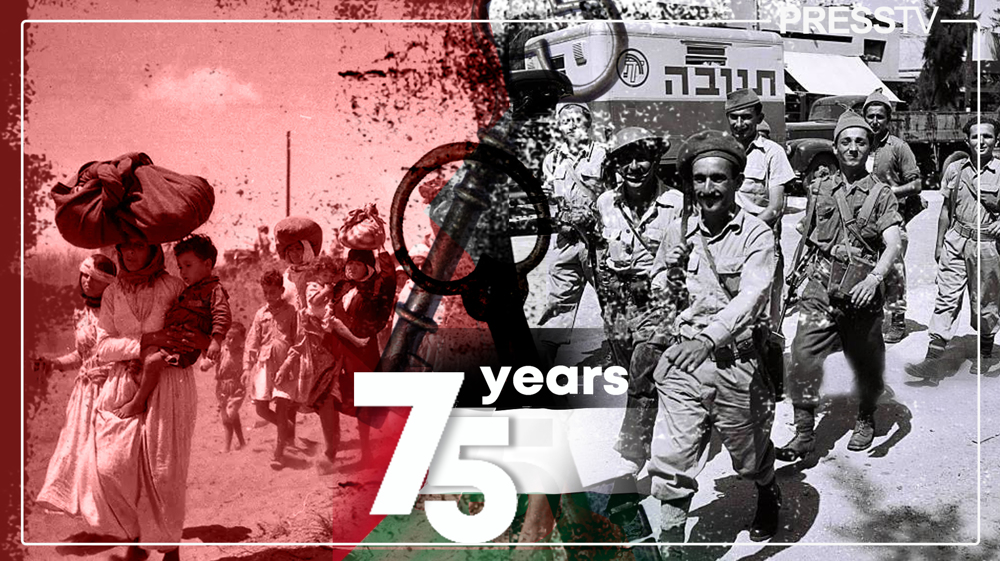




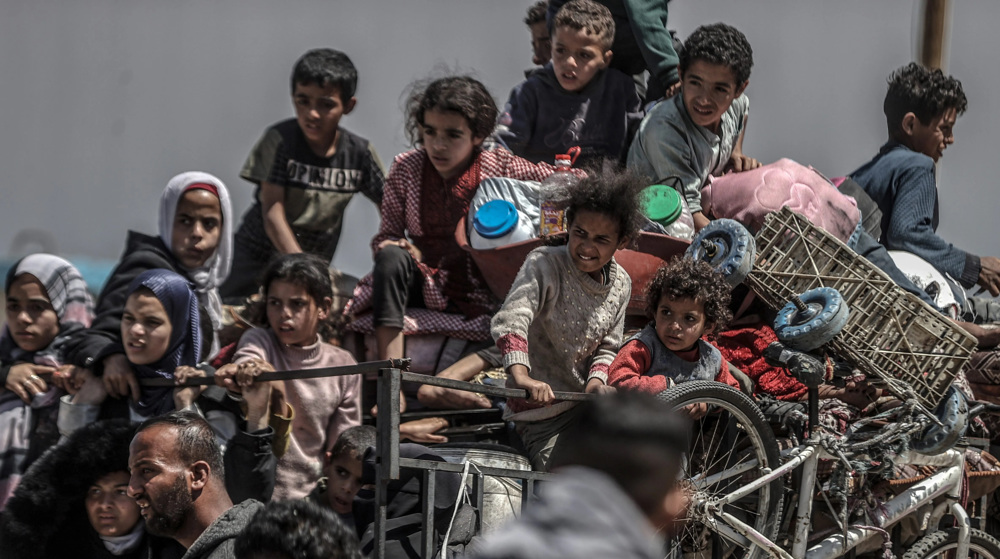
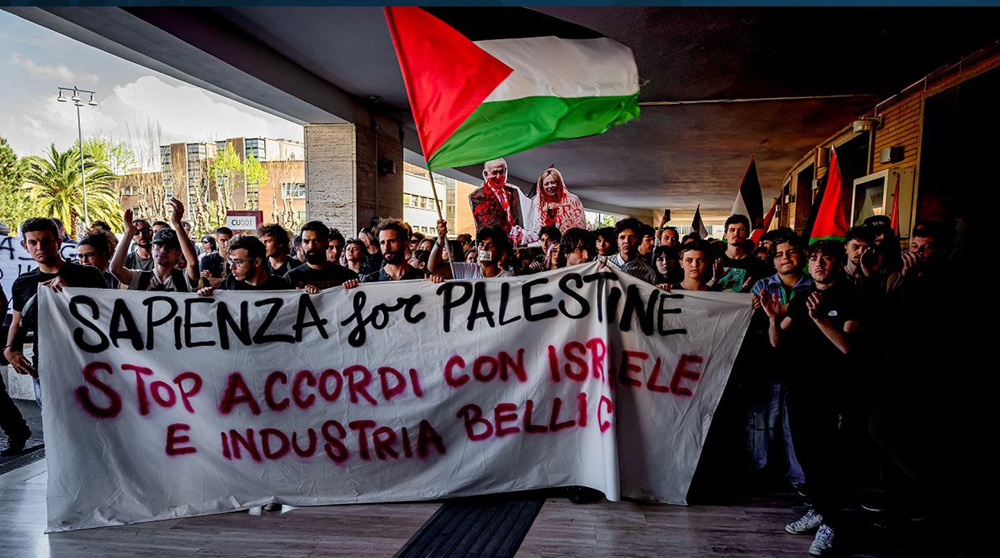
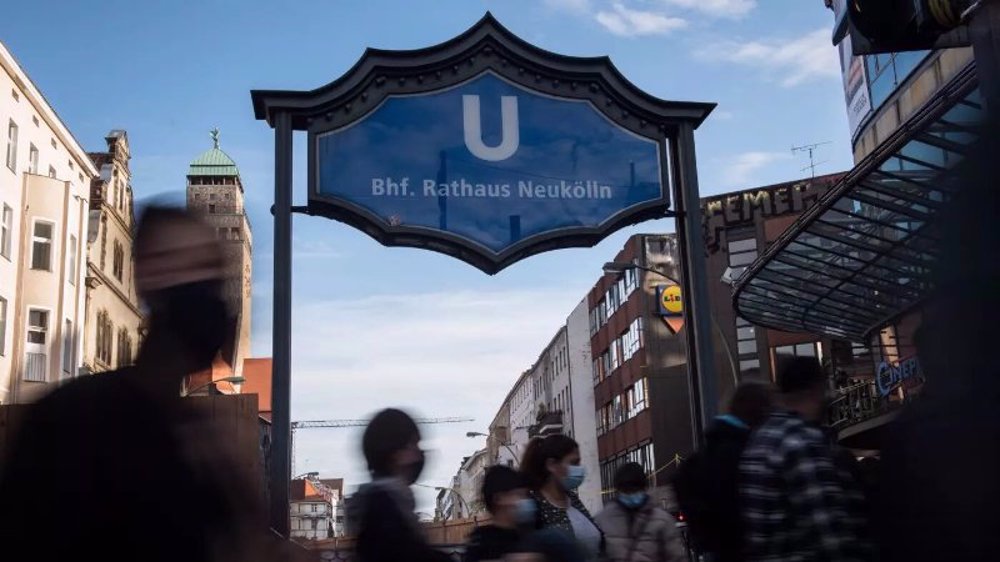

 This makes it easy to access the Press TV website
This makes it easy to access the Press TV website